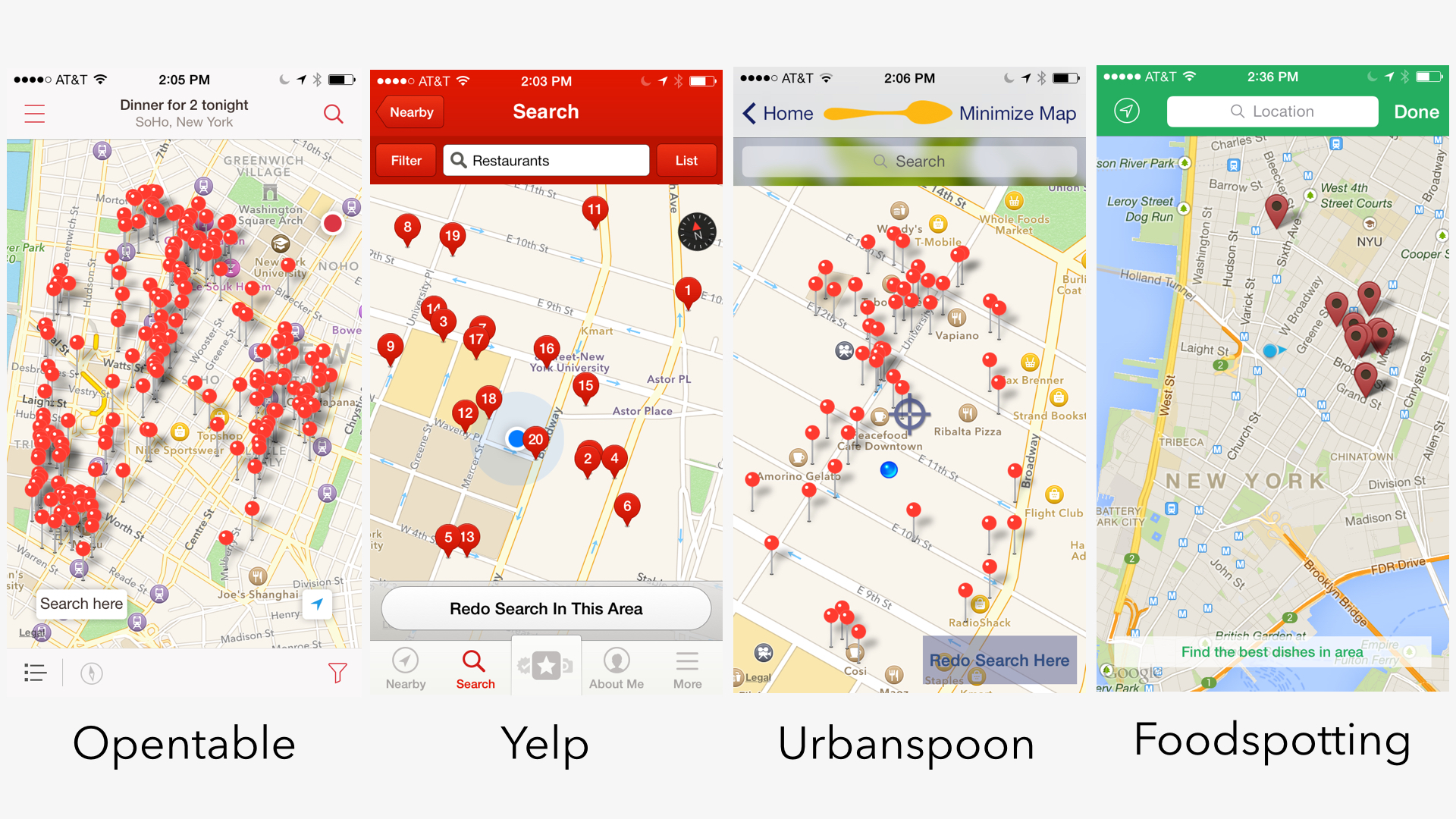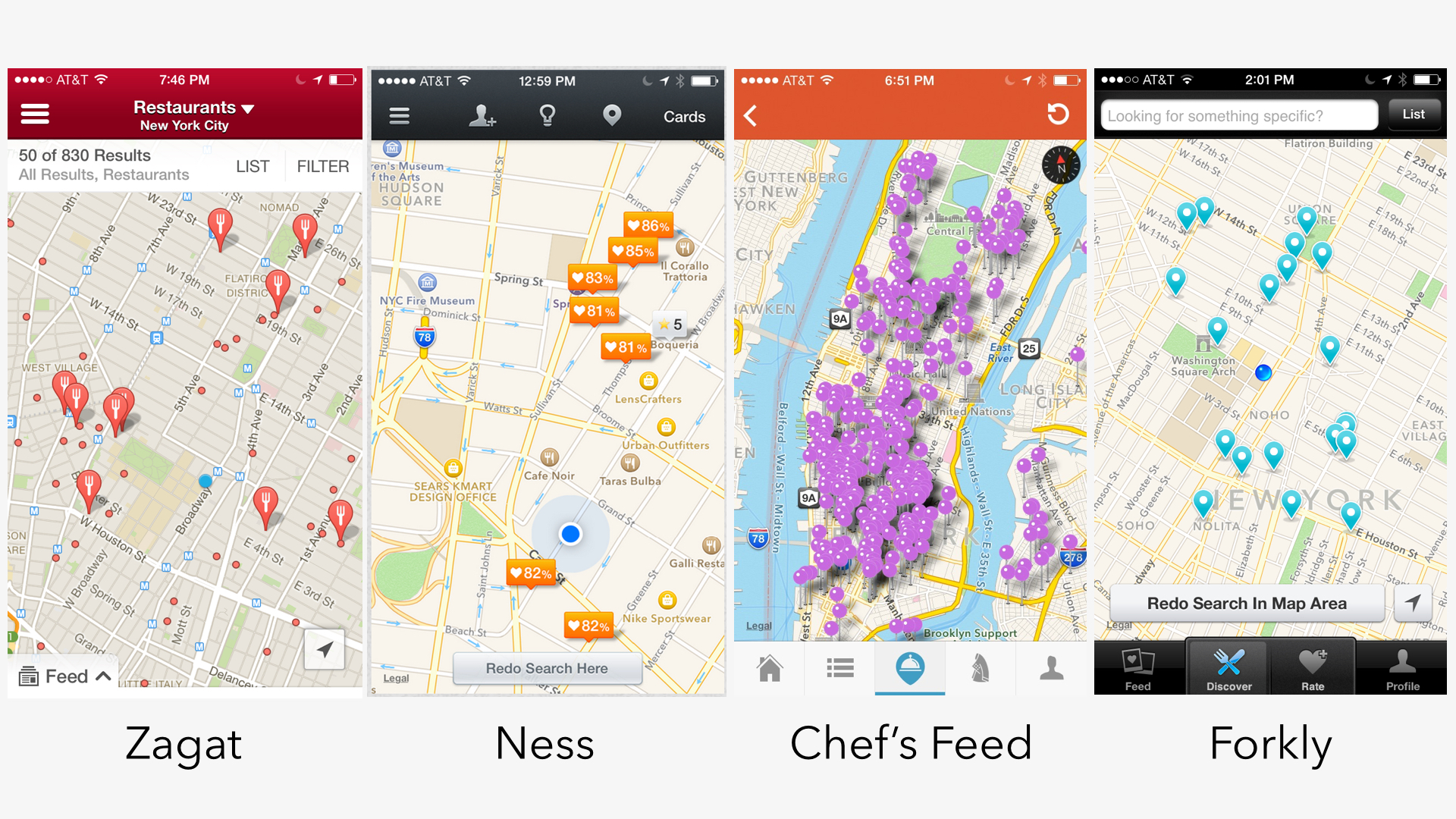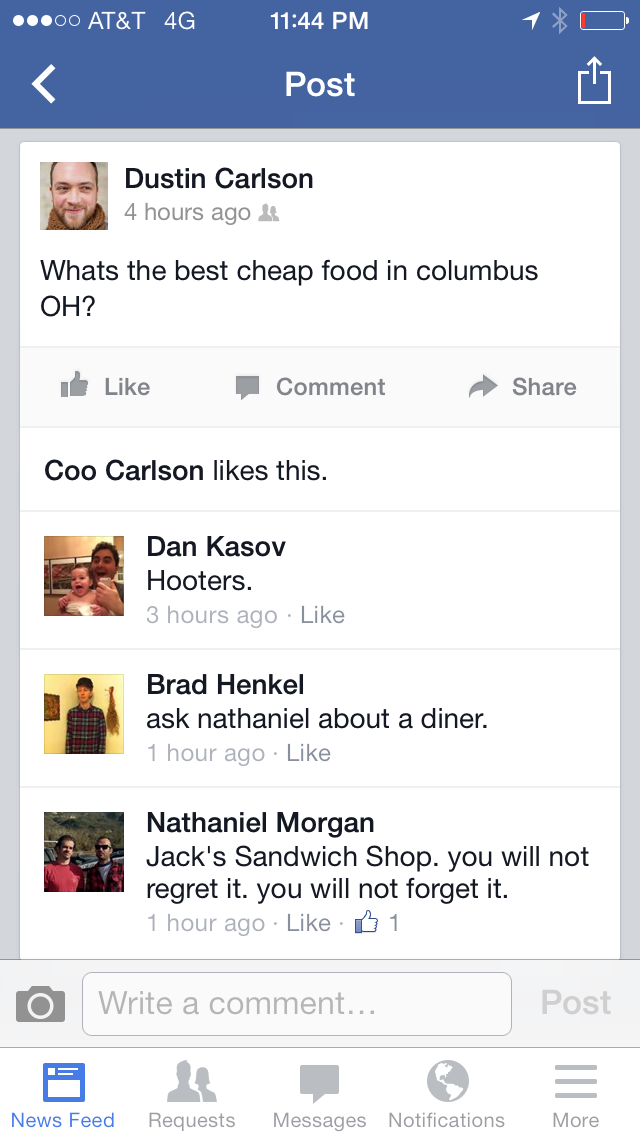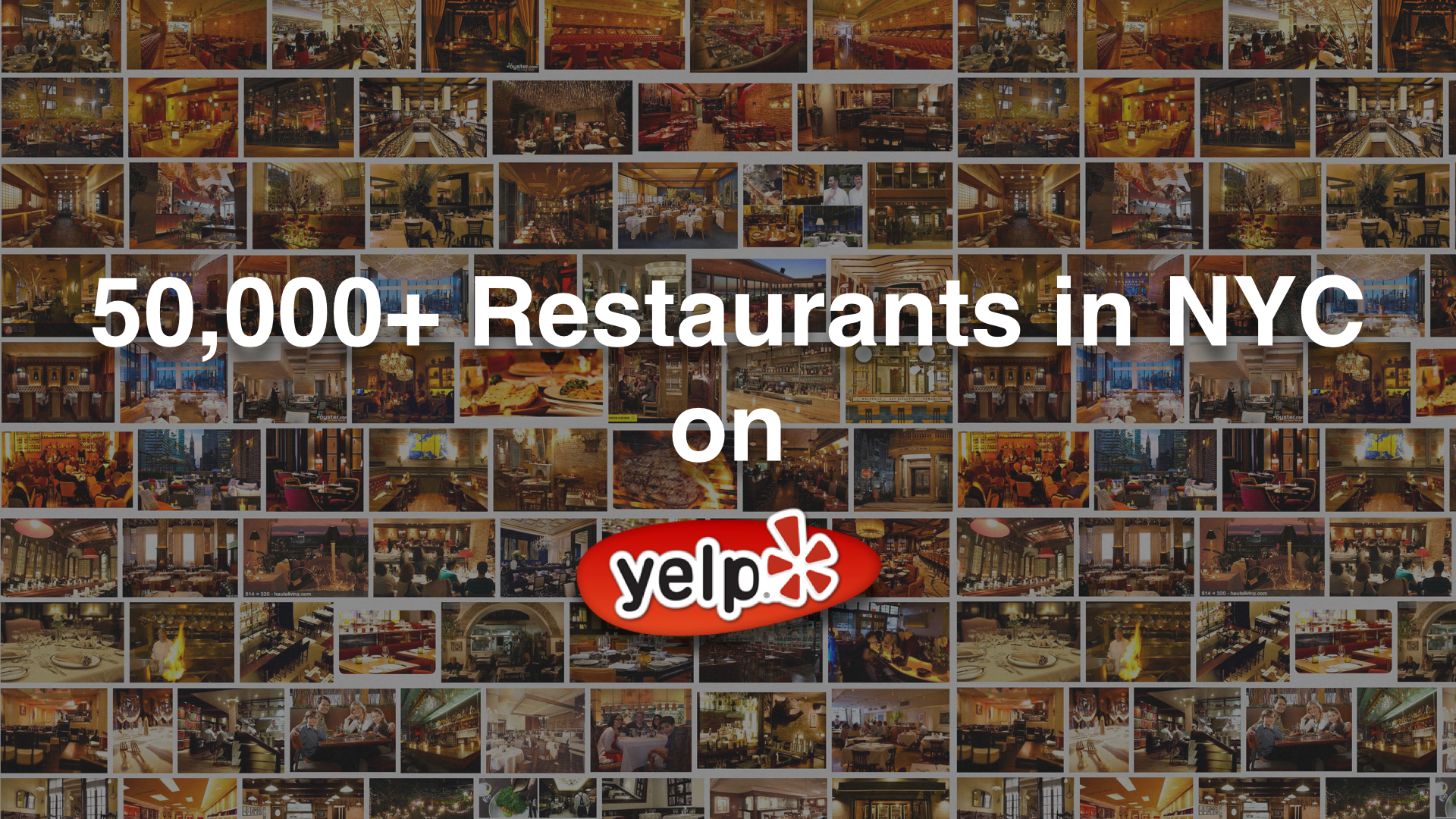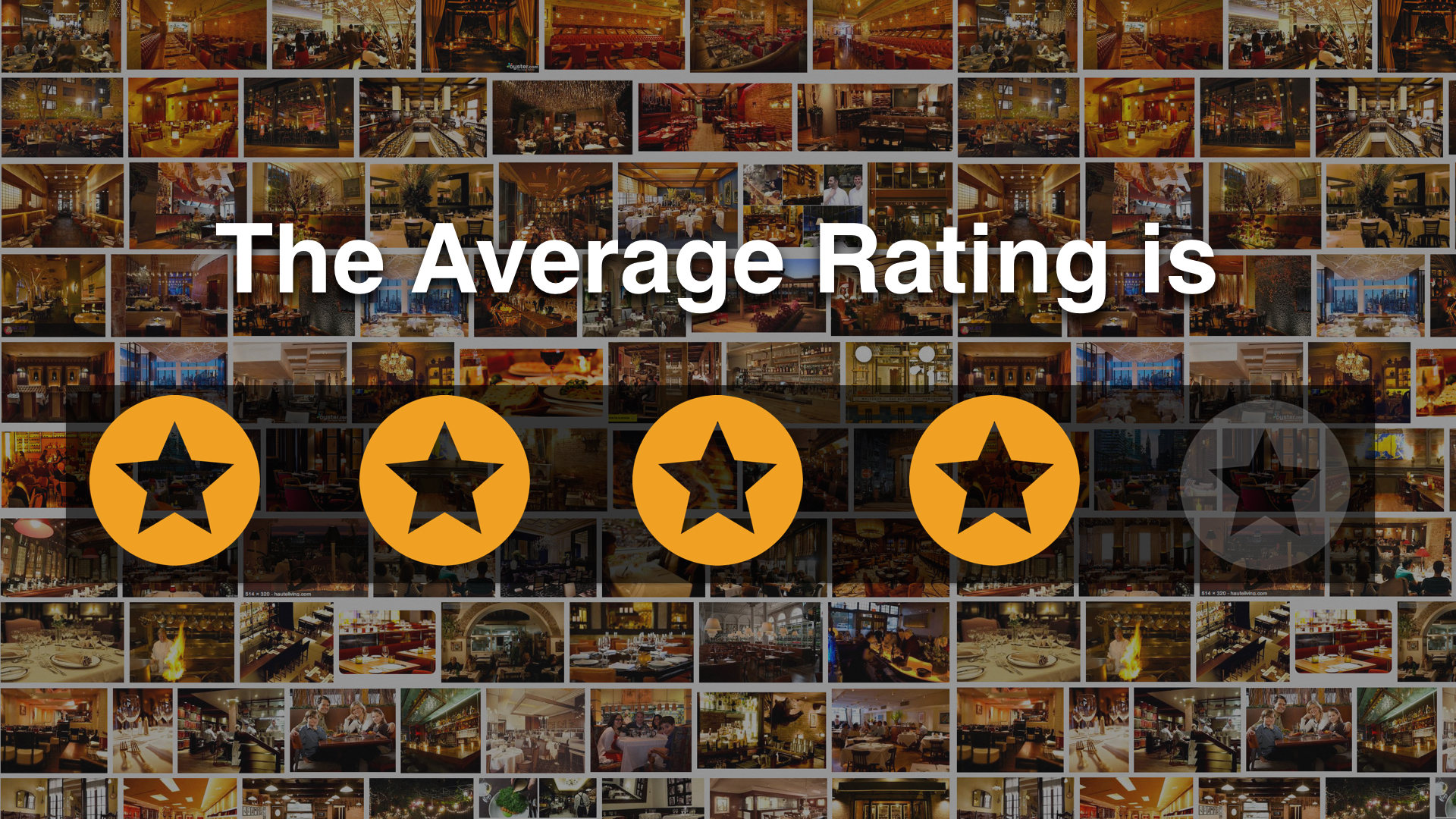What Didn't Work
As with a Tweet or a Facebook post/status, Last Eats declarations were intended to be updated with regularity - thus allowing for a fresh feed of what is currently fueling the culinary tastes within your community. Unfortunately, this didn't happen as planned. For the most part, users created recommendations, posted them and them never changed them. The focus on a single recommendation for a single city was implemented so that the second a user added a new entry, that recommendation would supersede everything that came before it - yet keep an archive of the previous Last Eats made. This was never the natural behavior of the user. Too many people assumed their eats were etched in stone and that they couldn't alter or tweak them.
Another huge problem was that we didn't focus on a specific region to launch the platform. Although the project was inspired by and based on the New York City dining experience, we let the floodgates open to begin. From the date of my Thesis defense to the end of the summer, we accumulated nearly 500 recommendations with over 10,000 page views. Yet the recommendations were so smattered with such breadth that it was hard to reliably use the platform outside of a few cities.
The Evolution of Last Eats - September 2014
Another issue we had was the time it took to add a recommendation was too long. We had too many single page steps that required too much of the user and not enough reliance upon existing, easily found data to supplement the user generated content.
Based on this feedback, in September of 2014 I designed an easier, simpler and more intuitive content creation prototype that emphasized discovering unique culinary experiences - the content that you can't reliably source from Yelp - in a single page.
See a screenshot from this secondary site below.
This led to a more pronounced emphasis upon mood, location and experience and a lot of new questions.
Where Can We Take This?
One of the things we learned from our first users was how important it was to differentiate ourselves based on the data that users can't already source from Yelp or so many other food discovery apps. With this in mind, and our clear sense of mood and experience being an exciting focus, I began to look into what it would take to move forward with this project - shifting from an academic exercise to a socially optimized food discovery business.
Before moving forward, we needed to return to our core users and confirm with them again that we were heading in the right direction.
More User Research
Below are a selective highlights from our users:
- What is the most useful thing that Last Eats provides you as a user?
- "Recommendations from people I trust ".... "its not a rating system like yelp or spponwhatvever" ...."Less clutter! Don't have to sort through tons of suggestions.".... "Recommendations from people whose taste I actually know".... "The visual content of the food is rich and high quality. Just like airbnb they are a medium for people to fantasize about what they searching for next. Last Eats should make me see a picture that someone has posted and should make me crave that food for the future. "
- What is the most frustrating thing about the current Last Eats experience?
- "Doesn't work on Chrome, or isnt its own app. Makes it a bit harder to navigate.".... "Not enough friends on it.".... "Adding a Last Eats in the same city replaces my existing post. I think it'd be great if each person were allowed to post their top 5 or top 10. Or perhaps it could be organized into Last Eats by neighborhood within a city. I have a few chef friends in SF and I'd love to be able to browse all of their top favorite restaurants in in the city."
- What specifically would bring you back to the site more frequently?
- "If I could rely on finding a great restaurant within 10 blocks of my current location, that was open during the time I searched. ".... "More details in recommendations.".... "It should be the airbnb of food. Sometime's I go on airbnb just because I'm curious where I could go and stay in some random ass country ha. That would be cool if I could go on Last Eats and have a similar feeling be evoked by what food photos are aggregated on my feed.".... "if you could become part of "friend" groups so you can only browse recommendations of people you know."
These samples of user responses seemed to give us the confidence that many of our core objectives were being validated. We are creating trusted recommendations in a streamlined, engaging manner. Like so many young platforms, we heard form our users that they wished the community was larger and that it was an app more than a website. We asked one of our test groups over the summer about the importance of presenting these recommendations in an app format and what implications that would have on engagement. What we heard was rather unequivocal.
Of our test users, 80% said that they would use Last Eats more if it were an app as opposed to a website.
Even more striking, In 2014, the percentage of time spent on mobile apps as opposed to mobile optimized web sites was 86% for apps and 14% for the web. That's a staggering contrast. If we we're going to move forward, we decided to do so as a native app.
So that's what we did with an app called Toast.






